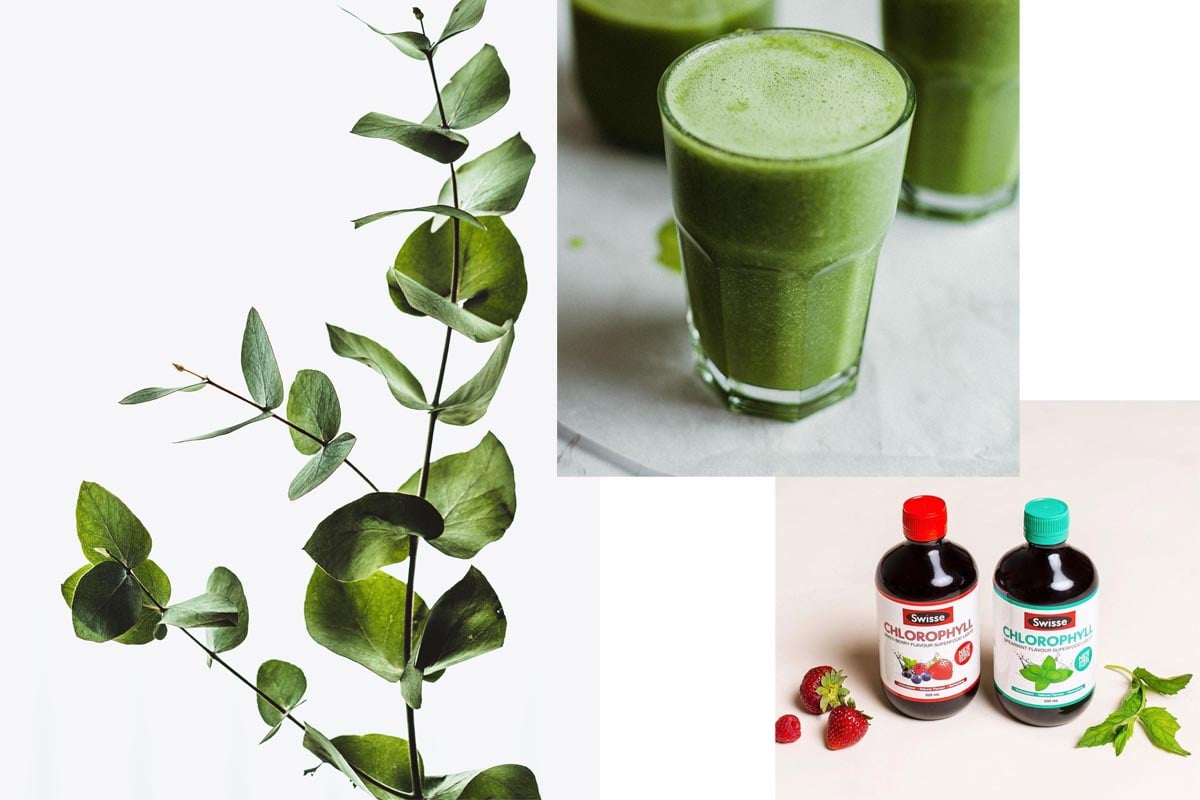
It's the wellness trend you're seeing all over Tik Tok - ingestible chlorophyll.
While this seems like a trend that has seemingly popped up overnight, in reality, ingestible chlorophyll has been a wellness secret for many years. I first came across this supplement in the early 2000s. I was visiting my Dad and my Step-Mum at their home in Thailand. Every morning, without fail, my Step-Mum would pour a green liquid she pulled from the fridge into a glass of water. It was liquid chlorophyll and she'd been drinking it religiously for years.
I wouldn't call her "wellness obsessed" but she was always very conscious of what she put into her body and made sure she was eating the right things for gut health and overall wellbeing. Since then, I thought of chlorophyll as something that "healthy people" drank and didn't give it much more thought.
But since seeing it emerge on Tik Tok it had me thinking, what exactly is chlorophyll? And what exactly does it do for us and our wellbeing? To find out more, I connected with Marina Martic, Swisse’s in-house training and education Manager. She answered all the questions I had about ingestible chlorophyll, plus a few more I didn't think to ask.
What is chlorophyll?
Chlorophyl is nature’s green vitality boost. It is naturally found in plants and algae. You can also find chlorophyll in dietary supplements and functional foods. This powerhouse phytochemical contains antioxidant, vitamin, and mineral properties. Antioxidants are what help our cells to defend against oxidative stress from our busy lifestyles and environment. Chlorophyll is the green pigment found in plants – think dark leafy greens, think chlorophyll.
What does chlorophyll do for plants?
Chlorophyll is a green compound found in plants and essentially, its role is to absorb light energy, primarily sunlight. This helps plants to grow their own food by absorbing sunlight which helps convert it to energy through the process of photosynthesis (a process that creates energy and oxygen). Via photosynthesis, the stored energy held by the plant is converted to carbon dioxide and water and reorganises it to glucose (sugar). The plant uses glucose with nutrients in the soil to sprout and flourish.
Is this something found naturally in the foods we eat or is it something we need to supplement?
Yes, many common daily foods and specifically dark leafy greens contain chlorophyll. Food sources such as, spinach, parsley, green beans, seaweed, alfalfa, spirulina, and wheatgrass contain chlorophyll. As the chlorophyll in plants is a fat-soluble compound, eating these greens with some healthful fats such as, extra virgin olive oil can support absorption. There are also ways to increase dietary chlorophyll with functional foods or dietary supplements like liquid chlorophyll. Most chlorophyll supplements contain chlorophyllin, which is a water-soluble derivative extracted from natural chlorophyll. This is the extract of chlorophyll commonly found in liquid chlorophyll supplements. It is a convenient way to increase this phytochemical in the diet and has the potential to be better absorbed than natural chlorophyl due to the water-soluble nature of chlorophyllin. 1
Why is it being used as a liquid ingestible supplement?
Chlorophyll has been used for many years due to its proposed health benefits. Chlorophyllin is the common supplemental form of chlorophyl you will come across. As it is a water-soluble derivative of chlorophyll, it is well absorbed by the body as it can easily pass through the small intestine. It is convenient, cost-effective and adds an antioxidant boost to your day.
Where can we see the benefits? Gut health? Complexion?
Are there health benefits to chlorophyll, to put it simply, yes! Science is in its early stages though and there is limited research on the use of chlorophyll in human studies. However, we do know chlorophyll is rich in antioxidants, and has anti-inflammatory effects. Therefore, chlorophyll’s actions are likely to help protect our cells and tissues. 1, 2, 3
There are many far reaching claims that have been made for chlorophyll such as a body odour neutraliser, wound healing, alkaliser, liver detox support, and anecdotally individuals are raving about the positive effects on their skin appearance. But, much more research needs to be done to uncover the benefits and to support these claims about chlorophyll and its derivatives. A fun fact is that chlorophyll’s chemical structure is similar to haemoglobin - the red pigment in human blood that carries oxygen.
How much should we take to get the benefits?
There is no recommended daily allowance set for liquid chlorophyll. Doses vary per liquid chlorophyll supplement and of course for everyone, but the average dose is 100-300mg per day. Always consult with your healthcare practitioner.
What do you think more people should know about chlorophyll?
It is a really easy way to increase your water intake and add a little superfood punch to your drink bottle.
Sources:
1. Medical News Today. 2018. https://www.medicalnewstoday.com/articles/322361#_noHeaderPrefixedContent
2. Egner et al. (2001). Chlorophyllin intervention reduces aflatoxin-DNA adducts in individuals at high risk for liver cancer. Proc Natl Acad Sci U S A. 98(25):14601-6.
3. Zeng et al. (2018). Preventive and Therapeutic Role of Functional Ingredients of Barley Grass for Chronic Diseases in Human Beings. Oxid Med Cell Longev.



